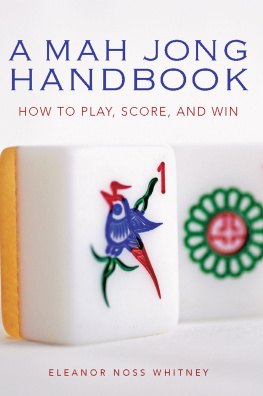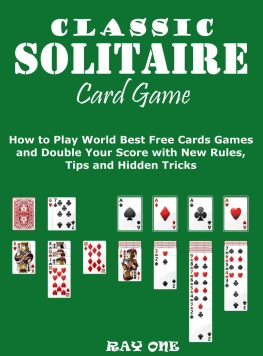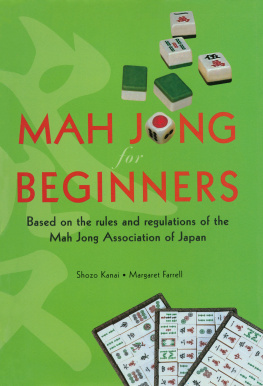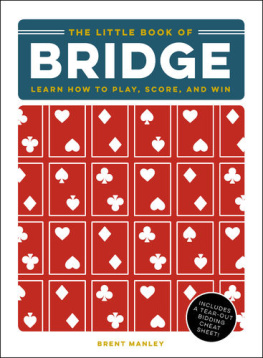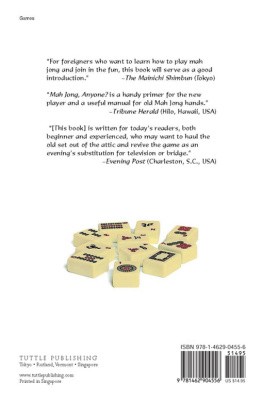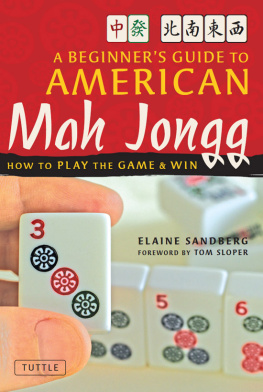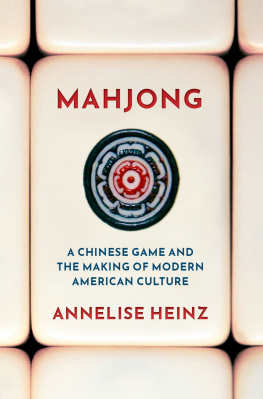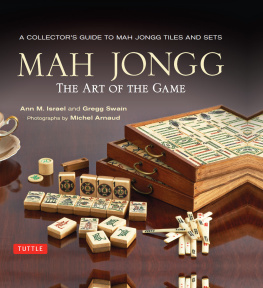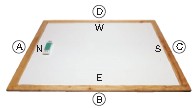Eleanor Noss Whitney - Mah Jong Handbook: How to Play, Score, and Win
Here you can read online Eleanor Noss Whitney - Mah Jong Handbook: How to Play, Score, and Win full text of the book (entire story) in english for free. Download pdf and epub, get meaning, cover and reviews about this ebook. year: 2012, publisher: Tuttle Publishing, genre: Children. Description of the work, (preface) as well as reviews are available. Best literature library LitArk.com created for fans of good reading and offers a wide selection of genres:
Romance novel
Science fiction
Adventure
Detective
Science
History
Home and family
Prose
Art
Politics
Computer
Non-fiction
Religion
Business
Children
Humor
Choose a favorite category and find really read worthwhile books. Enjoy immersion in the world of imagination, feel the emotions of the characters or learn something new for yourself, make an fascinating discovery.
- Book:Mah Jong Handbook: How to Play, Score, and Win
- Author:
- Publisher:Tuttle Publishing
- Genre:
- Year:2012
- Rating:3 / 5
- Favourites:Add to favourites
- Your mark:
Mah Jong Handbook: How to Play, Score, and Win: summary, description and annotation
We offer to read an annotation, description, summary or preface (depends on what the author of the book "Mah Jong Handbook: How to Play, Score, and Win" wrote himself). If you haven't found the necessary information about the book — write in the comments, we will try to find it.
Originally played with cards, and then piece carved from ivory or bamboo, the Chinese game of Mahjong or Mah Jongg is well over a thousand years old. Said to have originated in the court of the Emperor of Wu, for centuries Mahjong remained a diversion exclusively for the royal class of China. Mahjong has been called the game of a hundred intelligences. When played by experts it can be fast and subtleeven difficult to follow.
A Mah Jong Handbook is the all-comprehensive Mahjong guide, offering a clear and concise introduction to the classic Chinese, Western, and Japanese rules of the game and outlining its many variants. A great way to learn Mahjongit presents the complex rules in a clear format, introducing those unfamiliar with the game to its rules and techniques. It will also allow more experienced players to expand their understanding of winning strategy quickly.
Part One covers the rules of the game. Part Two provides alternatives, variations, and additions to the game. Part Three explores the fundamentals of successful strategy. With illustrations of sample hands, scoring charts, and a glossary of terms, A Mah Jong Handbook is an invaluable resourcea complete guidebook to the ancient but always fascinating game of Mahjong.
This Mahjong guidebook includes:
Eleanor Noss Whitney: author's other books
Who wrote Mah Jong Handbook: How to Play, Score, and Win? Find out the surname, the name of the author of the book and a list of all author's works by series.

